
Related
Topics
We speak with a former U.S. soldier who witnessed orders being given to drop white phosphorus bombs over Fallujah; a Pentagon spokesperson in Baghdad who admits such bombs were used but denied they were used as a chemical weapon; and the news director of RAI TV, the Italian TV network that produced “Fallujah: The Hidden Massacre.” [includes rush transcript]
- Maurizio Torrealta, News Editor for the Italian television RAI and co-producer of the film “Fallujah: The Hidden Massacre.”
- Jeff Englehart, former army Specialist in Iraq. He maintains a weblog called Fight to Survive
- Lieutenant Colonel Steve Boylan, spokesperson for the U.S. military in Iraq.
Transcript
AMY GOODMAN: We have just aired the North American exclusive broadcast of the Italian state broadcaster RAI that today on this first anniversary of the siege of Fallujah broadcasts this documentary. It is called Fallujah: The Hidden Massacre. Here to discuss chemical weapons allegations, we’re joined on the telephone by Maurizio Torrealta. He is news editor for the Italian state broadcaster RAI, co-producer of this documentary. He joins us from Italy. Jeff Englehart is with us. He served as an army specialist in Iraq in Fallujah, interviewed in the film. He is joining us from Colorado, maintains the weblog, “Fight to Survive.” You can find it at www.FTSSoldier.blogspot.com, on the line with us from Colorado Springs. And on the phone from Baghdad is Lieutenant Colonel Steve Boylan, spokesperson for the U.S. military in Iraq. We welcome you all to Democracy Now! Let us begin with our spokesperson on the phone with us from Iraq, Lieutenant Colonel Steve Boylan of the U.S. military. Your response to the documentary, Fallujah: The Hidden Massacre?
LT. COL. STEVE BOYLAN: Well, I did not get a chance to view it. I have heard what was played over your program. And I would say, for the most part, the elements that I heard, for the most part, are tantamount to propaganda, falsehoods and rumors. To address some of that, they’re calling white phosphorus an illegal weapon. And that is an error. It’s a perfectly legal weapon to use by all conventions of land warfare. The soldier that is stating that it is a chemical weapon and illegal is in error, as is his assertions that elements were waiting for elections and all other types of things about when the attacks were to happen. Again, he’s completely in error, and based on his position he would not have any knowledge of the decisions that were made at the national strategic level or at the headquarters of multinational forces of Iraq. So again, he is basing his assumptions off of rumor and hearsay.
AMY GOODMAN: Lieutenant Colonel Boylan, I just wanted to read to you something from Knight Ridder. They are quoting a senior Iraqi Defense Ministry official who requested anonymity because he wasn’t an authorized spokesman. This from Knight Ridder. It says, “We had to stop some operations until the U.S. elections were over. The Iraqi government requested support from the American side in the past, but the Americans were reluctant to launch military operations because they were worried about American public opinion. Now their hands are free.” And this was a piece that appeared out of Knight Ridder, November 3, 2004, with the headline, “Bush Expected to Move Quickly on Iraq.” This after the election.
LT. COL. STEVE BOYLAN: Again, that is an error. I am one of the individuals who sat in on many of these meetings so that we could plan all the events. Media were pre-positioned for quite a while, watching the buildup of our operations, preparing to go into Fallujah. We were trying to ensure we had perfect targeting so that we could limit the damage. There was the ability to surround the city to allow no one to escape that was considered hostile. So again, there are a lot of assertions and hearsay and innuendo that has been used with Fallujah and on many other cases propagated by people who have not the complete information and are completely wrong.
AMY GOODMAN: So are you confirming that you used white phosphorus in Fallujah, but saying that it’s simply not illegal?
LT. COL. STEVE BOYLAN: White phosphorus has been used. I do not recall it was used as an offensive weapon. White phosphorus is used for marking targets for both air and ground forces. White phosphorus is used to destroy equipment and other types of things. It is used to destroy weapons caches. And it is used to produce a white smoke which can obscure the enemy’s vision of what we are doing.
AMY GOODMAN: And you’re using it in Iraq?
LT. COL. STEVE BOYLAN: We have used it in the past. It is a perfectly legal weapon to use.
AMY GOODMAN: Maurizio Torrealta, news editor for the Italian state broadcaster, RAI 24. Your response?
MAURIZIO TORREALTA: Well, the United States, as the UK and Italy, signed the convention about prohibition of chemical weapons. And the convention define precisely that what make forbidden an agent, a chemical agent, is not the chemical agent itself. Because as Lieutenant said, the white phosphorus can be used to light the scene of a battle. And in that case, it’s acceptable. But what make a chemical agent forbidden is the use that is done with it. If you use white phosphorus to kill the people, to burn and to block them, people and animals, even animals say the convention that we all sign, Italy, United States and UK, this is a forbidden chemical agent.
And we are full of picture that show bodies of young people, of children, of women which have strange — particular, they are dead with a big corruption of the skin and show even the bone. And the clothes are intact, untouched. And that shows there has been an aggressive agent like white phosphorus that has done that. And we have all the number of those bodies and the place where they have been buried. So any international organization that wanted to inquire about that has all the tools and information to do it. And even the witness — the U.S. military that we interview confirmed that the use of white phosphorus was against the population. And we have even picture of the fact that has been told by the helicopter down to the city, not by the ground up in the air to light the scene. Also the images, they spoke by themselves.
AMY GOODMAN: Jeff Englehart, you are the Specialist — former U.S. Specialist in the Army, a member now speaking out against the war. You are interviewed in this documentary explaining how white phosphorus was used in Fallujah. Can you tell us more?
JEFF ENGLEHART: Oh, yeah. I mean, I definitely heard it being called for. And I even talked to reconnaissance scouts after the siege, and they said they had actually called for it. The Pentagon spokesperson says that they use this for concealment, or some sources say they use it for illumination. But, I mean, I think that’s ridiculous, because we would use — just based on my training as a reconnaissance scout myself, we would use illumination separately, as it’s on exclusive ground. Since my training, we were taught that white phosphorus is used for troops out in the open or to destroy equipment and that it burns and that the only way to prevent the burning is to douse it with wet mud.
To me, it’s definitely a chemical weapon in the fact that it burns, and it burns indiscriminately. In fact, the use of white phosphorus violates the Geneva protocol for the prohibition of use in war of asphyxiating, poisonous or other gases and bacterial methods of warfare. So, I mean, even if the Geneva Protocol says it’s illegal, I don’t see how we’re able to use it and then say that it’s used for our own cover or illumination, when it actually could hurt our own troops. So I just think that, from the very top, the big problem with this war is that from the very top to the lowest level soldier, everyone’s being lied to. And then the news gets gentrified by the mass media to make it sound like, 'Oh, well, white phosphorus is a good weapon that we can use to help spot targets,' when it’s actually designed to burn its victims.
AMY GOODMAN: Lieutenant Colonel Boylan in Baghdad, your response?
LT. COL. STEVE BOYLAN: Well, part of what he was saying was fading in and out, so I’m not clear on everything he said. But again, I would assert that it is a legal weapon to use. It is not considered a chemical weapon as chemical weapons are described today. And again, he is again in error. And I would stack up my 21 years of training in the military versus his and what his profession is now. All of our chemical weapons have been declared to the Organization for Prohibition of Chemical Weapons are being destroyed in the United States in accordance with our obligations under the chemical weapons convention. So he, again, is in error that it is considered a chemical weapon, as are all other individuals asserting that fact.
AMY GOODMAN: I wanted to read to you from the Geneva Convention on certain conventional weapons, protocol three. “Protocol and Prohibitions or Restrictions on the Use of Incendiary Weapons. Geneva, October 10, 1980. Article I, definitions for the purpose of this protocol. One, incendiary weapon means any weapon or munition which is primarily designed to set fire to objects or to cause burn injury to persons through the action of flame, heat or combination thereof, produced by a chemical reaction of a substance delivered on the target. (a) Incendiary weapons can take the form of, for example, flame throwers, fougasses, shells, rockets, grenades, mines, bombs and other containers of incendiary substances.” Lieutenant Colonel Boylan?
LT. COL. STEVE BOYLAN: I know of no cases where people were deliberately targeted by the use of white phosphorus. Again, I did not say white phosphorus was used for illumination. White phosphorus is used for obscuration, which white phosphorus produces a heavy thick smoke to shield us or them from view so that they cannot see what we are doing. It is used to destroy equipment, to destroy buildings. That is what white phosphorus shells are used for.
AMY GOODMAN: Jeff Englehart, you were a soldier in Fallujah. Your response?
JEFF ENGLEHART: Well, based off where I was at, I wasn’t actually involved in direct combat. I was in a tactical attack center. Basically I was danger close, which means 200 meters from a lot of the explosions that were happening, and when we would hear the call for Willy Pete or Whiskey Pete, white phosphorus, huge explosions would hit targets. I just can’t conceive how he could say that a white cloud would conceal our troop movement. It’s obviously a toxic gas that, when it touches skin, it will burn, it will cause third-degree burns to the bone. So I just don’t understand where he’s coming up with this assertion. It’s hypocrisy, if you ask me.
AMY GOODMAN: Lieutenant Colonel Boylan, though you’ve just listened to the excerpt of the documentary, you haven’t seen the images. They are extremely graphic. The images of clothes that are still intact but the faces burned off, the skin, the arms, these are images of Fallujah.
LT. COL. STEVE BOYLAN: That can happen from numerous ways and not just from white phosphorus attacks. That can happen from massive explosions. If you look at the car bombs that the terrorists use today, you have the same effects from car bombs from suicide vests. I have personally witnessed these things here in Baghdad. So, you know, to say definitively that it was due to a white phosphorus attack is not supported by any one that I know of nor do you probably have any forensic evidence, nor does the producer of the show have that, as well.
AMY GOODMAN: Maurizio Torrealta — let’s ask the Italian editor of the state broadcast RAI that did this documentary, Maurizio Torrealta.
MAURIZIO TORREALTA: Yeah. You can see all what I am talking about in our website, RAINews24.it, and I suggest the Lieutenant to get a look to the streaming of our transmission. You know, we started our research, because we saw that strange picture that showed people dressed and burned, but the dress was not touched by any chemical aggression. And that make impossible to have a comparison between a explosion and other kind of explosion where everything is burned, completely burned. And those pictures, those pictures were very different, very difficult to be analyzed. And that’s why we started to work on those pictures, because they show clearly that it was a chemical agent that was aggressive against the skin and all the part of the skin that was connected with water. And I think the soldier that is connected in your transmission can explain that very well, as he did to us.
AMY GOODMAN: Lieutenant Colonel Steve Boylan, the various newspapers around the world are reporting on this RAI documentary that we’ve aired an excerpt of today. Again, RAI 24, the Italian state broadcasters, 24-hour news channel, saying phosphorus burns bodies; in fact, it melts the flesh all the way down to the bone. Quoting from the documentary, “I saw the burned bodies of women and children. Phosphorus explodes and forms a cloud. Anyone with a radius of 150 meters is done for.”
And what we watched through this documentary are the color close-ups of Fallujah residents, some still in their beds, again, clothes remaining largely intact, but skin dissolved or caramelized or turned the consistency of leather by the shells. Also, a biologist is interviewed in this documentary, named Mohamed Tarek, who says a rain or fire fell on the city. The people struck by this multicolored substance started to burn. We found people dead with strange wounds: The bodies burned but the clothes intact.
LT. COL. STEVE BOYLAN: Well, I would still say that, one, I have not viewed the documentary so I can’t comment on that. And I cannot comment on, as far as the visuals. And I cannot comment as far as when those pictures were taken. During the time of the fall attacks in Fallujah, the city was sealed off. It was a massive fight between the, for the most part, the U.S. Marines and the insurgents. They had booby trapped massive areas of the city. In fact, many of the networks have aired the footage showing how the detonations happened from the booby traps of IEDs throughout the cities.
AMY GOODMAN: Would that explain why, perhaps, white phosphorus was used in this way?
LT. COL. STEVE BOYLAN: Precision-guided munitions were used on specific targets throughout the campaign in Fallujah in order to destroy those types of targets. There were over one hundred journalists that were part of the embedded program with the Marine Expeditionary Force in Fallujah that reported daily on what was occurring. So I find it very unique that only one station out of the entire group of people or media outlets that are seeming to have this story.
AMY GOODMAN: We also interviewed a reporter who was actually un-embedded last year who reported these stories. But Maurizio Torrealta of RAI 24, your response?
MAURIZIO TORREALTA: Well, that is a serious problem for information, the fact that you got only information that are controlled when you are embedded. You might find an agreement that obliges you to accept the fact that you are not going to give out information that could jeopardize or make difficulties for the army you are embedded with. So that is a serious problem that was not coming out from one end of journalists, staying only from one side of the fight.
LT. COL. STEVE BOYLAN: That’s completely in error.
AMY GOODMAN: What is it that’s in error?
LT. COL. STEVE BOYLAN: The ground rules that he is describing. Those are for future plans, and they cannot divulge what our future plans are. We do not screen, censor or look at any journalist’s work prior to their release. They are also not allowed to release classified information. But on their reporting, after the fact or as it happens live, there is no censorship, screening or prevention of what they cover. And I think that is fairly clear from the coverage that people have seen where there have been events that have not been too flattering of our forces have been aired.
AMY GOODMAN: Maurizio Torrealta?
MAURIZIO TORREALTA: Lieutenant, do you deny that embedded journalists sign an agreement in which they take responsibility for not jeopardizing in any way, with information that they will deliver, the life of the people they are with?
LT. COL. STEVE BOYLAN: Only as it applies to future operations. For example, we would not allow them to broadcast what time and location and routes we are taking for a morning — for the next day’s attack. That would be in consideration of not jeopardizing the soldiers’ lives, as well as their own. But as far as as it happens, they have been and I think everybody has seen throughout since the operations commenced in 2003 of live coverage of what happens as it happens.
MAURIZIO TORREALTA: Do you think that the sojourner journalists were in the front line were very close to the battle during the night? When we got the shot, shot the video, of the white phosphorus agent that was thrown down on the city, do you think that sojourner journalists were over there, be able to document of that?
LT. COL. STEVE BOYLAN: There were journalists all over, as I watched many of the networks that I was able to see. I saw live footage covering many different aspects of the battlefield from the very front to the rear. And at night you could see anything like that from a great distance. So I question the validity of many of the things that I’ve heard.
AMY GOODMAN: Jeff Englehart, you are a former U.S. soldier. You were there at the battle. What is your response to the lack of coverage, since you contend that white phosphorus was used as a chemical weapon?
JEFF ENGLEHART: Well, I guess it’s really my word against his. I know for a fact I heard it being called for on the radio. As far as media control, though, I know for a fact that if a journalist released a story that our task force wasn’t happy with, that journalist just wasn’t invited back. And you had to look at it from the point of being a freelance journalist in Iraq where you’re not getting protection. Of course, you’re going to come out with a story that’s more accurate. But when we had reporters from CNN, mostly CNN or the Army Times, they were protected, they were concealed in armored Humvees, protected by soldiers. And it just seemed that they always told the Army’s side of the story in return for that protection. So, I mean, there’s definitely a media control going on in Iraq. There’s just no doubt about it. And for him to say that they don’t censor any stories coming out, I don’t doubt that they don’t censor them. I just think that if they don’t like a story, they just don’t invite the reporter back.
AMY GOODMAN: Well, on that note we’re going to have to wrap up this discussion. I want to thank you, Jeff Englehart, for joining us, former Specialist in the U.S. Army, runs the blogspot “Fight to Survive,” that’s www.FTSSoldier.blogspot.com. Also, I want to thank Lieutenant Colonel Boylan for joining us, Steve Boylan, spokesperson for the U.S. military, speaking to us from Baghdad. And Maurizio Torrealta, news editor for Italian television network, RAI 24, the Italian state broadcaster. Their documentary is airing today throughout Italy called Fallujah: The Hidden Massacre. And you can go to our website for contact information and to see the excerpts.

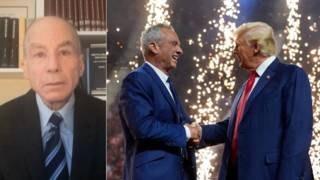
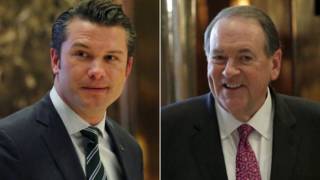
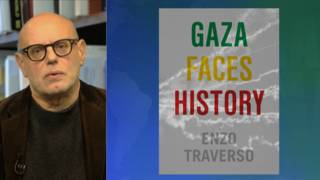
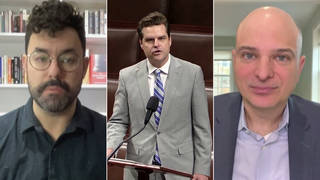





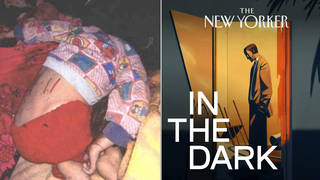
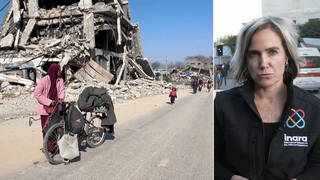
Media Options